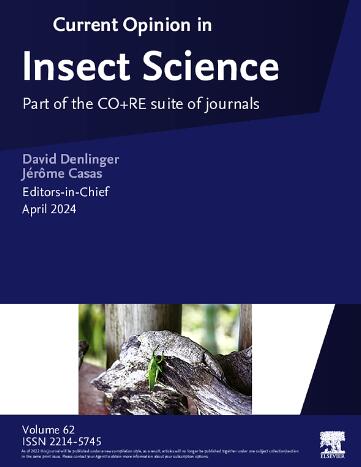蚊子对城市适应和排斥的基因组学及其媒介能力的影响。
IF 4.8
1区 农林科学
Q1 BIOLOGY
引用次数: 0
摘要
随着世界各地城市化的加速,能够在城市栖息地生存和繁衍的蚊子越来越多地传播蚊媒疾病。在已知的近3500种蚊子中,只有少数几种迅速适应了新的(在进化时间尺度上)城市环境。在这篇综述中,我们从最近的文献中强调了几个新兴的主题和可检验的假设。首先,明显的城市适应可以大致分为在城市环境中产生的新适应和在现代城市化之前在不同环境中进化的特征。其次,参与城市适应的变异通常在物种复合体和隐谱系中被划分,基因流选择平衡的历史可能与紧凑基因组结构的进化有关,这种结构可以促进快速的城市适应。第三,城市适应通常对媒介能力(蚊子作为特定病原体的有效媒介的能力)产生影响,尽管这些差异背后的选择性驱动因素和遗传机制尚不完全清楚。为了充分了解蚊子的城市适应性,我们提倡协调努力,增加进化生态学、种群基因组学和医学昆虫学研究之间的联系。在回顾其他几个研究较少的性状之前,我们讨论了所有三种观点都最发达的两个性状-寄主偏好和杀虫剂抗性。本文章由计算机程序翻译,如有差异,请以英文原文为准。
Genomics of urban adaptation and exaptation in mosquitoes and consequences for vectorial capacity
As urbanization accelerates around the world, mosquitoes that are capable of surviving and thriving in urban habitats increasingly spread mosquito-borne diseases. Across the >3500 known species of mosquitoes, only a few rapidly adapted to the novel (on an evolutionary timescale) urban environments. In this review, we highlight several emerging themes and testable hypotheses from recent literature. First, apparent urban adaptations can be roughly divided into newer adaptations arising in an urban context and exaptations — traits that evolved in a different context, before modern urbanization. Second, variants involved in urban adaptation are often partitioned among species complexes and cryptic lineages, and the history of gene flow–selection balance may be related to the evolution of compact genomic architectures that could facilitate rapid urban adaptation. Third, urban adaptation often has consequences for vectorial capacity — the ability of mosquitoes to serve as effective vectors of a particular pathogen — though the selective drivers and genetic mechanisms underlying these differences are incompletely understood. To fully understand urban adaptation in mosquitoes, we advocate for a coordinated effort to increase linkages between evolutionary ecology, population genomics, and medical entomology research. We discuss the two traits for which all three perspectives are the most developed — host preference and insecticide resistance — before reviewing several other less studied traits.
求助全文
通过发布文献求助,成功后即可免费获取论文全文。
去求助
来源期刊

Current opinion in insect science
BIOLOGYECOLOGYENTOMOLOGY-ECOLOGY
CiteScore
10.40
自引率
1.90%
发文量
113
期刊介绍:
Current Opinion in Insect Science is a new systematic review journal that aims to provide specialists with a unique and educational platform to keep up–to–date with the expanding volume of information published in the field of Insect Science. As this is such a broad discipline, we have determined themed sections each of which is reviewed once a year.
The following 11 areas are covered by Current Opinion in Insect Science.
-Ecology
-Insect genomics
-Global Change Biology
-Molecular Physiology (Including Immunity)
-Pests and Resistance
-Parasites, Parasitoids and Biological Control
-Behavioural Ecology
-Development and Regulation
-Social Insects
-Neuroscience
-Vectors and Medical and Veterinary Entomology
There is also a section that changes every year to reflect hot topics in the field.
Section Editors, who are major authorities in their area, are appointed by the Editors of the journal. They divide their section into a number of topics, ensuring that the field is comprehensively covered and that all issues of current importance are emphasized. Section Editors commission articles from leading scientists on each topic that they have selected and the commissioned authors write short review articles in which they present recent developments in their subject, emphasizing the aspects that, in their opinion, are most important. In addition, they provide short annotations to the papers that they consider to be most interesting from all those published in their topic over the previous year.
 求助内容:
求助内容: 应助结果提醒方式:
应助结果提醒方式:


